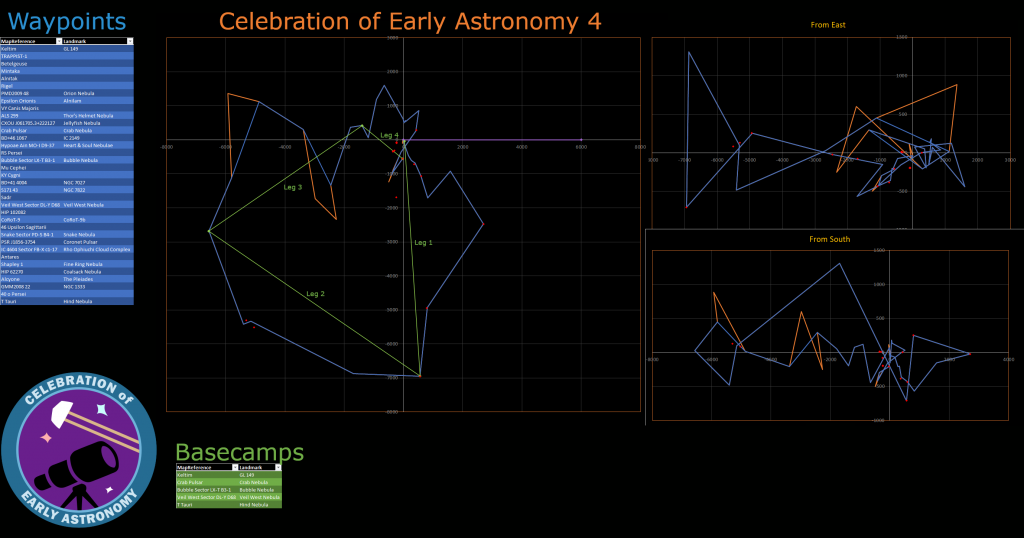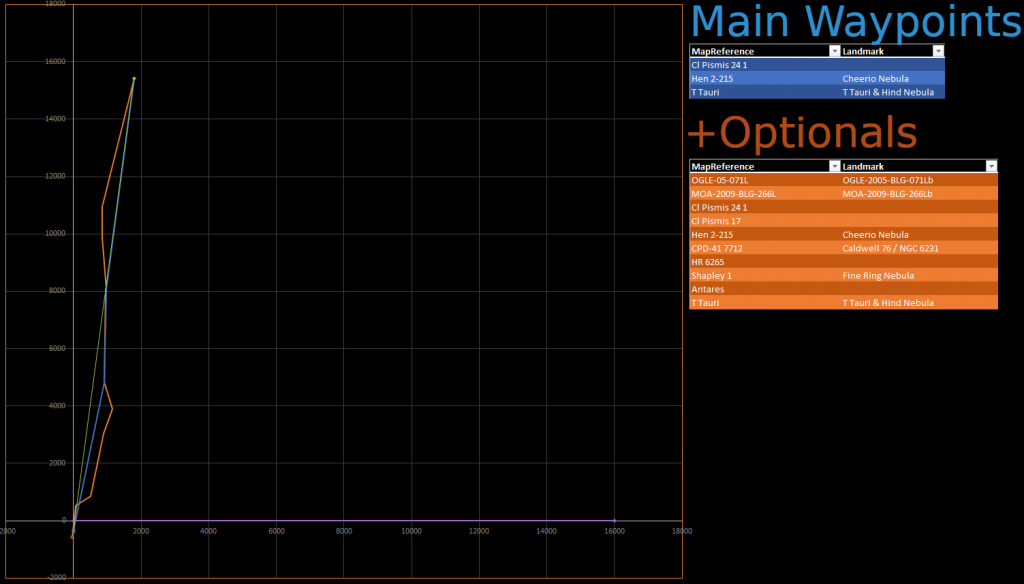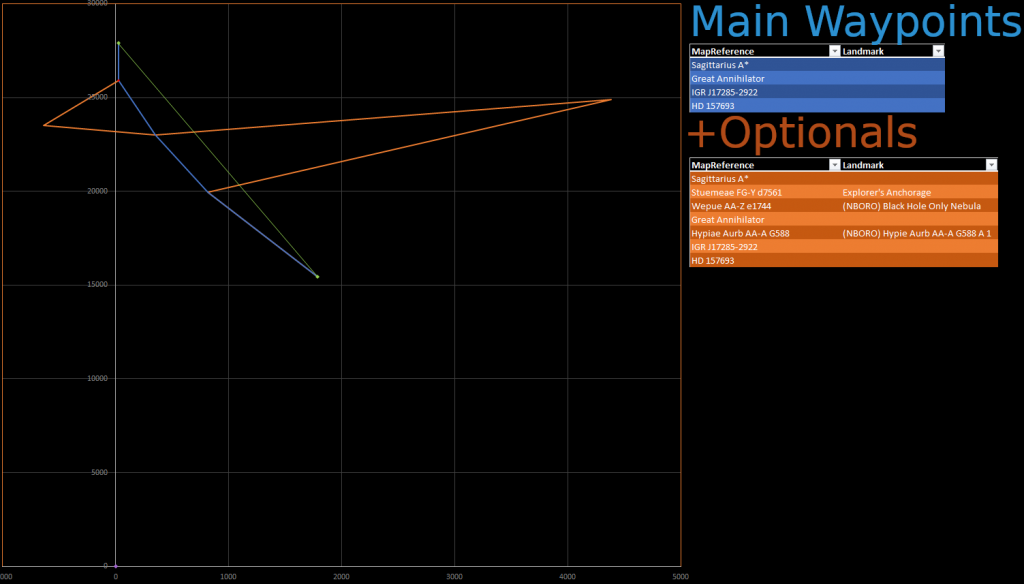Dates: January 08, 2022 to March 05, 2022
Planned Map (Still subject to alterations) (click for full size):
Distance: 39,335.54 Ly

“The early 2000s, they were often the speculative setting of early science fiction works. Early imaginings of interstellar travel, first contact with aliens, apocalypses, pandemics, you name it, there was probably a movie or book set in the early 21st century of it. While humanity may not have invented interstellar travel by 2020 as many novels and films purported, they still discovered plenty gems of our galaxy by then.
Lucky for us in 3308 we do have interstellar travel and can visit these gems that humans on Earth in the early 21st century could only dream of visiting. So that is just what we will be setting out to do. This expedition will visit many of the noteworthy celestial objects discovered by the early 21st century, some of which even still are considered noteworthy even today in 3308.
We will be setting off from our faction’s home system Keltim, also known as Gliese 149 to the humans of 2020. From there we will be travelling our route clockwise. Many of the sights on this expedition revisit those featured on earlier CEA expeditions for those that weren’t on those.
— Patron Kezika T. Wylair
==============================================================
Please fill out a sign-up form if you’re coming along!
Note: even if you’re not sure yet all your details, the form will give you an edit link once you submit so that you can come back and edit your submission in the future with any changes you make. Just make sure to save your link!
Sign-up form: https://theexpedition.info/Register
Roster: https://theexpedition.info/Roster
EDSM Page: https://theexpedition.info/EDSM
==============================================================
Summary and Information
Dates: January 08, 2022 to March 05, 2022
Waypoint Count: 35
Distance: 39,335.54 Ly
Expedition Discord: https://theexpedition.info/Discord
Odyssey Compatibility Notes: With Horizons and Odyssey at this time currently split and some people not having Odyssey we will do basecamps in Horizons if needed. There is a private question on the registration form regarding if you have Odyssey or not. When we announce basecamps the bot in our server will make a post that you can RSVP to if you plan on coming. We will cross-reference the attendee list with the Roster to make the determination of if the basecamp needs otbe help in Horizons or if only Odyssey compatible players are attending that particular one.
==============================================================
Waypoints
Start: Keltim
End: T Tauri
=====================
Current Waypoint List (each leg is 2 weeks)
=====================
Leg 1
- Keltim (GL 149)
- TRAPPIST-1
- Betelgeuse
- Mintaka
- Alnitak
- Rigel
- PMD2009 48 (Orion Nebula)
- Epsilon Orionis
- VY Canis Majoris
- ALS 299 (Thor’s Helmet Nebula)
- CXOU J061705.3+222127 (Jellyfish Nebula)
- Crab Pulsar (Crab Nebula)
Leg 2
- BD+46 1067
- Hypoae Ain MO-I D9-37 (Heart & Soul Nebulae)
- RS Persei
- Bubble Sector LX-T B3-1 (Bubble Nebula)
Leg 3
- Mu Cephei
- KY Cygni
- BD+41 4004 (NGC 7027)
- S171 43 (NGC 7822)
- Sadr
- Veil West Sector DL-Y D68 (Veil West Nebula)
Leg 4
- HIP 102082
- CoRoT-9 (CoRoT-9b)
- 46 Upsilon Sagittarii
- Snake Sector PD-S B4-1 (Snake Nebula)
- PSR J1856-3754 (Coronet Pulsar)
- IC 4604 Sector FB-X c1-17 (Rho Ophiuchi Cloud Complex)
- Antares
- Shapley 1 (Fine Ring Nebula)
- HIP 62270 (Coalsack Nebula)
- Alcyone (The Pleiades)
- GMM2008 22 (NGC 1333)
- 40 o Persei
- T Tauri (Hind Nebula)
=====================
Each Leg will additionally have an announcement post when they start detailing any optionals they may have added to them. Optional waypoints are subject to be added during the expedition up until the start of the leg.
=====================


